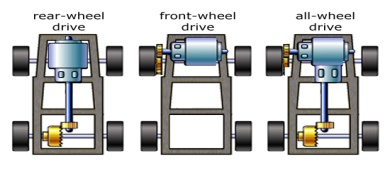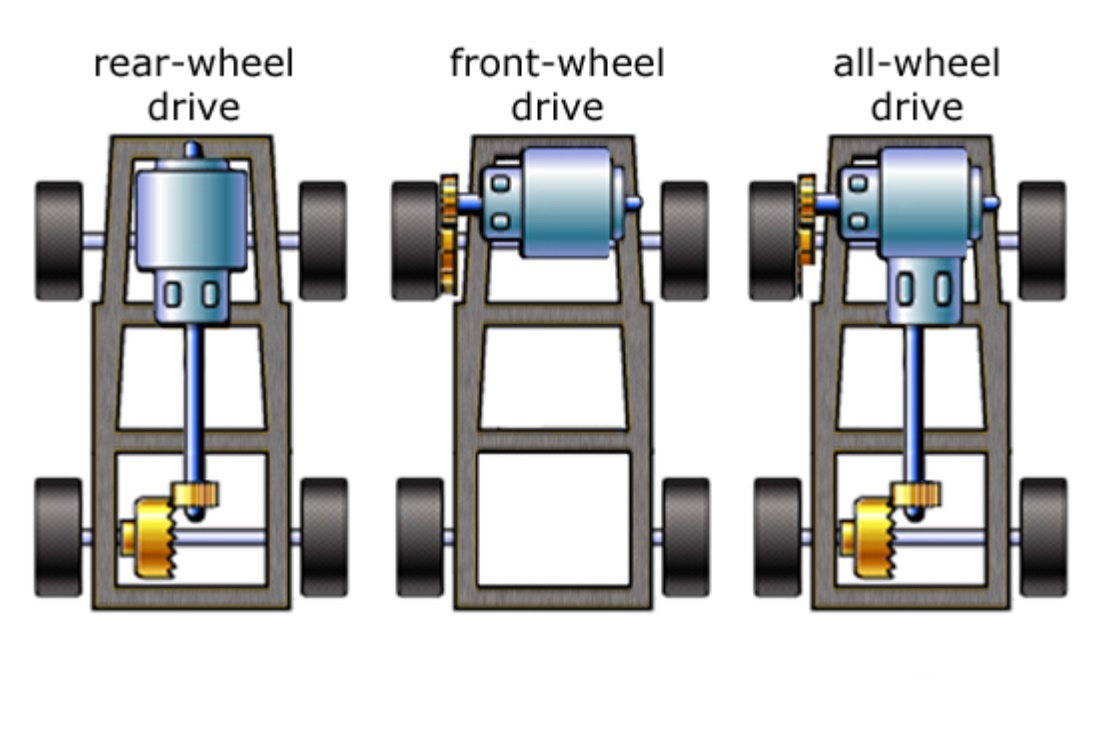Blog

Which Wheel Drive Is Best For You? Front Wheel Drive or Rear Wheel Drive
Today we find that vehicles come in 3 drive configurations front-wheel drive, rear-wheel drive and 4 or all-wheel drive. In this article, we will focus on only front and rear-wheel drive. Front-wheel drive is where the engine drives only the front wheels. Rear-wheel drive is when the engine drives only the rear wheels.

Front-wheel drive is used in order to provide a compact package. Very little space is necessary since the engine and the wheels being driven are in the front of the vehicle. A center tunnel or a higher chassis is not necessary as they would be in a rear-wheel-drive configuration. The driveshaft of the rear-wheel-drive vehicle has to reach from the engine to the rear wheels causing the need for a tunnel or higher chassis. The front-wheel-drive-configuration also promotes good traction.

Due to their better traction due to weight distribution, front-wheel-drive vehicles are preferred to rear-wheel-drive if one needs to drive in snow, mud or wet roads. However, front-wheel-drive vehicles are not always as quick to accelerate as rear-wheel drive because of weight transference that takes place during acceleration causes the front wheels to sharply reduce their grip and this adversely affects torque.
Find the New Car that’s Right for You >>
In addition, front-wheel-drive vehicles feature a transverse engine (facing side to side) while rear-wheel-drive vehicles have a longitudinal engine (facing front to back). Due to the style of the engine, front-wheel drive actually restricts the size of the engine. That is why you will see front-wheel-drive cars with inline 4 and V6 engines. Longer engines such as Inline 6 and big bore V8 engines have a difficult time fitting into the available space. This is why most luxury cars as well as sports cars more often than not have a rear wheel drive configuration.
Advantages to a Front-Wheel-Drive Configuration Include:
- More Interior Space
- Lower Weight
- Less Cost to Manufacture
- Improved Drivetrain Efficiency
- Forward Center of Gravity Which Improves Traction
- Predictable Handling
Disadvantages to a Front-Wheel-Drive Vehicle Are:
- Poorer Torque Allowing Front-Wheel-Drive Vehicles to Pull Left or Right when They Are Accelerated with Some Force
- Lack of Weight Shifting Which Limits the Acceleration of the Vehicle
- Reduced Traction When the Vehicle Is Climbing a Slope in Slippery Conditions
- The CV Joints Attached to the Wheel Hub Tend to Wear Out Faster
- Increased Turning Circle Because the Transverse Engine Limits the Amount the Front Wheels Can Turn
- The Size of the Engine Is Restricted
Advantages to a Rear-Wheel-Drive Vehicle Include:
- Even Weight Distribution
- Better Weight Transfer During Acceleration
- Better Steering Radius
- Better handling On Dry Roads
- Better Braking
- Better Towing Capability
- Easier Serviceability
- Can Feature More Powerful Engines
Disadvantages Include:
- Possibility of Oversteering When the Vehicle Is Accelerated Hard
- Poorer Traction In Snow, Ice and Sand
- Less Interior Space
- Increased Weight
- Higher Cost for the Vehicle
- Improper Weight Distribution When the Vehicle Is Loaded
- A Longer Driveshaft to Reach the Rear Wheels
So, as you can see, it is important to consider your driving habits and needs to determine which configuration would be right for you.
Posted on August 2016,24 // Author: Admin